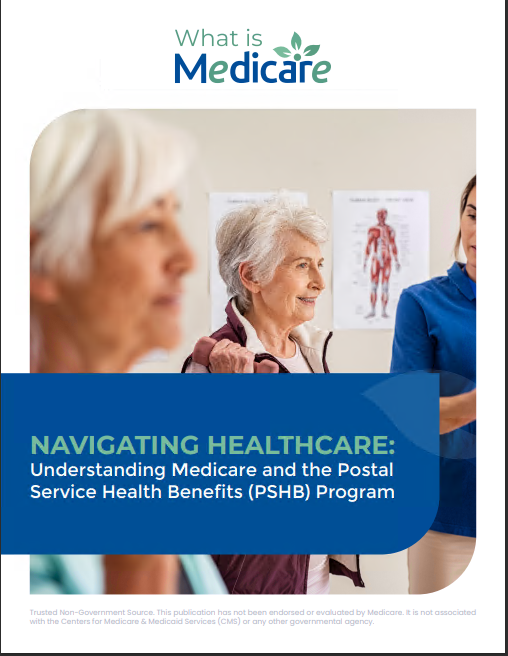Key Takeaways:
-
Coordinating your employer health plan with Medicare requires careful timing to avoid lapses in coverage and unexpected expenses.
-
Understanding enrollment periods, employer size rules, and how Medicare interacts with your job-based insurance ensures a smooth transition.
Understanding the Basics: How Employer Health Plans Work with Medicare
If you’re approaching Medicare eligibility but still have employer-sponsored health insurance, figuring out how the two work together can feel overwhelming. Employer health plans don’t always work seamlessly with Medicare, and failing to plan ahead could leave you with unexpected costs or even coverage gaps.
The good news? By following five key steps, you can ensure a smooth transition, avoid penalties, and maximize your benefits. Let’s break down exactly how to navigate this process.
Step 1: Determine If You Need to Enroll in Medicare at 65
One of the first decisions you need to make is whether to enroll in Medicare when you turn 65 or delay it. The answer depends largely on the size of your employer.
Employers with Fewer Than 20 Employees
If your company has fewer than 20 employees, Medicare becomes your primary insurance at age 65. This means that Medicare pays first, and your employer’s plan pays second. In this case, delaying Medicare enrollment could result in coverage gaps or late enrollment penalties.
Employers with 20 or More Employees
If your employer has 20 or more employees, your job-based insurance remains primary, and Medicare is secondary. You may be able to delay enrolling in Medicare Part B without penalties, but it’s important to check whether your employer coverage meets Medicare’s standards. Some employer plans require you to sign up for Medicare at 65 to continue coverage.
Step 2: Compare Coverage and Costs Before Making a Decision
Your employer health plan may offer robust benefits, but that doesn’t necessarily mean it’s the best option once you become Medicare-eligible. Consider the following when deciding whether to keep your employer coverage, switch to Medicare, or combine the two.
Premiums and Out-of-Pocket Costs
Medicare Part B has a monthly premium, and you’ll also need to factor in deductibles and co-pays. Compare these costs to your employer-sponsored plan to see which offers better value.
Prescription Drug Coverage
If your employer health plan includes prescription drug coverage, check whether it’s considered creditable coverage by Medicare. If it’s not, you may need to enroll in Medicare Part D to avoid penalties later.
Spouse and Dependents
If your employer plan also covers your spouse or dependents, consider how switching to Medicare might affect their coverage. Medicare doesn’t cover dependents, so your spouse may need to find alternative insurance.
Step 3: Know When and How to Enroll to Avoid Penalties
Enrolling at the right time is critical to avoid late penalties and gaps in coverage. Here’s what you need to know:
Initial Enrollment Period (IEP)
If you’re turning 65 and don’t have employer coverage, your Initial Enrollment Period (IEP) lasts for seven months—starting three months before your 65th birthday and ending three months after. Missing this window could mean permanent penalties.
Special Enrollment Period (SEP) for Employer Coverage
If you delay Medicare because you have active employer coverage, you qualify for a Special Enrollment Period (SEP) when you leave your job or lose coverage. This SEP lasts eight months after your employer coverage ends.
General Enrollment Period (GEP)
If you miss both your IEP and SEP, you’ll have to wait for the General Enrollment Period (GEP), which runs from January 1 to March 31 each year. Your coverage won’t start until July 1, and you may face late penalties.
Step 4: Coordinate Benefits to Maximize Coverage
Once you’ve enrolled in Medicare, it’s time to coordinate your benefits. Knowing who pays first will help you avoid surprise bills.
Primary vs. Secondary Payer Rules
-
If your employer has fewer than 20 employees, Medicare pays first, and your employer plan pays second.
-
If your employer has 20 or more employees, your employer plan pays first, and Medicare pays second.
Filing Claims Correctly
Understanding who pays first helps you file claims properly and avoid billing issues. If Medicare is secondary, your employer insurance processes the claim first, and Medicare covers the remaining costs.
Step 5: Reevaluate Your Coverage Annually
Medicare and employer health plans change from year to year. Even if you’ve made the right decision now, it’s important to review your options annually.
Open Enrollment Periods
-
Medicare Open Enrollment runs from October 15 to December 7 each year. This is the time to switch Medicare plans if needed.
-
Some employer health plans also have annual open enrollment periods, typically in the fall. Review any changes to your employer coverage.
Changes in Employment or Health Needs
If you retire, lose employer coverage, or develop new health needs, reassess your Medicare options. You may find that switching to Medicare fully makes more sense.
What Happens If You Don’t Enroll in Medicare on Time?
Missing Medicare enrollment deadlines can lead to serious consequences, including:
-
Late penalties: Medicare Part B late enrollment penalties increase the longer you wait and stay with you for life.
-
Coverage gaps: You could be left without insurance for months if you miss enrollment periods.
-
Higher healthcare costs: Without Medicare, you may have to pay full price for medical services that your employer plan doesn’t cover.
Make an Informed Decision to Protect Your Coverage
Coordinating your employer health plan with Medicare doesn’t have to be confusing. By understanding your options, comparing costs, and enrolling on time, you can avoid unnecessary expenses and maintain continuous coverage. Whether you’re keeping your job-based insurance, switching to Medicare, or combining the two, planning ahead ensures peace of mind.
For personalized assistance, speak with a licensed agent listed on this website who can help you navigate Medicare enrollment and coordinate your benefits.








